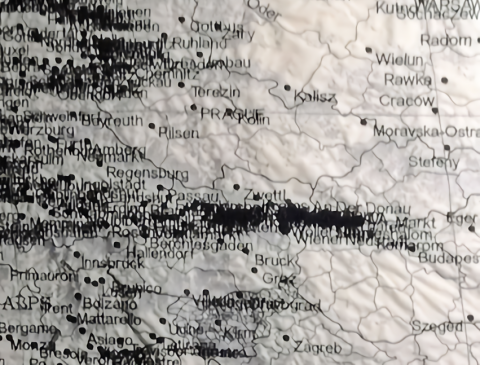Call for Papers to Why (Not)? Thinking Eastern Europe Digitally: Network Analysis, Data Modeling, Visualisation and Sharing in Historical Research

Venue: Herder Institute for Historical Research on East Central Europe – Institute of the Leibniz-Association Marburg
Date: 30 September – 1 October 2019
The Herder-Institute Research Academy is announcing its 2019 biannual conference. The aim of the conference is, firstly, to consider digital tools and technologies appropriate to the historical research of Central and Eastern Europe, and, secondly, to reflect critically on their applicability to the different fields of humanities research, including history, art history, social and cultural anthropology.
Digital History is a rapidly developing field, which has essential integrative effects but also produces certain risks. We look at Digital History as a bridge that connects different projects thematically as well as infrastructurally, while also offering a common ground for discussion on East Central Europe. Simultaneously, it can take different national cultures of knowledge into account, leading us to question the oppositions of local and global, of cultural center and peripheries, and multiplying the ways of “knowing about the past.” Perhaps more than other historical disciplines, it is project-driven and thus stimulates collaboration across the humanities, its methodological-theoretical achievements taking their starting point in most cases from concrete research problems. It also allows us to work with a large amount of data not easily operable by individual historians before.
At the same time, Digital History projects yield many e-resources related to cultural heritage as well as research by-products (such as metadata, texts, pictures, models, and authority files in addition to a number of digital tools and features). The long-term management of these resources and tools, as well as their preservation and interoperability, remain a challenge. As a result, the research questions and documented methods endure as the only trace of a project, yet – incidentally – they may be different from those put forward and used before the digital revolution. Furthermore, there is a risk that we may misperceive digital methods, seeing them as a way to provide better evidence and more precise results, or that we may omit the sources problematic for computational analysis.
Our question is how to use the methodological implications of Digital History in a sensible and skillful way in order to examine the global linkages of Eastern Europe that are generated in the various research fields: e.g., in the studies of cultural exchange, political integration processes, migration and economic connections. Both the regional and the global dimension should be emphasized. The latter acquires a particular attribute and character in the digital environment. At a time when Digital History is establishing itself as an academic discipline in its own right in Germany and across the world, we think this is a good point to reflect on the mistakes that can be made, the lessons we can learn, and the pitfalls that await the digital (art)historians of Central and Eastern Europe.
We would like to start with a close consideration of the capacities of specific (and popular) methods of digital analysis: historical network analysis, data modeling, data sharing, and visualization and to conclude with the more general question of their applicability to the historical, art-historical, cultural and anthropological research of Eastern and Central Europe.
The conference will combine presentations with discussion panels and a round table.
We are interested in proposals that relate (both in theory and practice) to the following questions:
- How do we digitally approach the ideas/knowledge transfer in Eastern and Central Europe?
- How do we model and “translate” archival historical data into a format appropriate for data-based computer analysis?
- In what ways can we integrate transnational and multilingually cataloged data and images?
- How can we best visualize the multiple interrelations that exist across historical and art-historical research e.g. in cultural and artistic developments in East Central Europe, economic ties or individual/group connections
-What are the challenges we are faced with in founding an online museum or virtual exhibition on East Central Europe?
- To what extent can collected data be shared with other researchers and publicized, taking into account different standards of data description and storage, as well as divergent authorship regulations in the countries of Eastern and Central Europe?
- How do we involve (non)-digitalized or digitally illiterate institutions – i.e. those not interested in digitalization – from the region under investigation?
- Do the informational technologies change our perception of Eastern Central Europe; do they dislocate the established center-periphery (power) relations?
If you would like to present at the conference, please send an abstract (up to 300 words) and a short biographical note to hira@herder-institut.de by 31 March 2019. We will notify you if your proposal has been accepted at the beginning of May 2019. Please specify which format of presentation is preferable to you.
-
Conference languages are English and German.